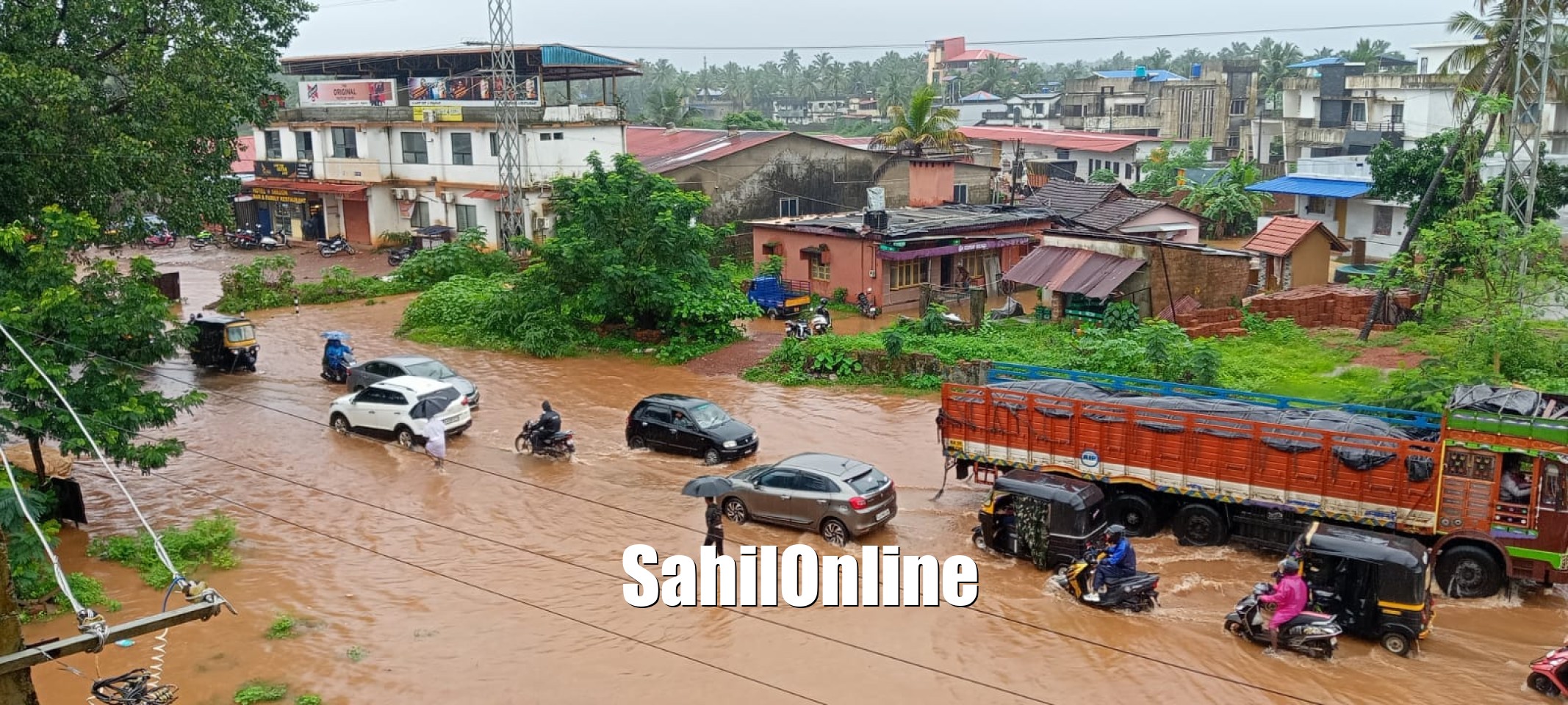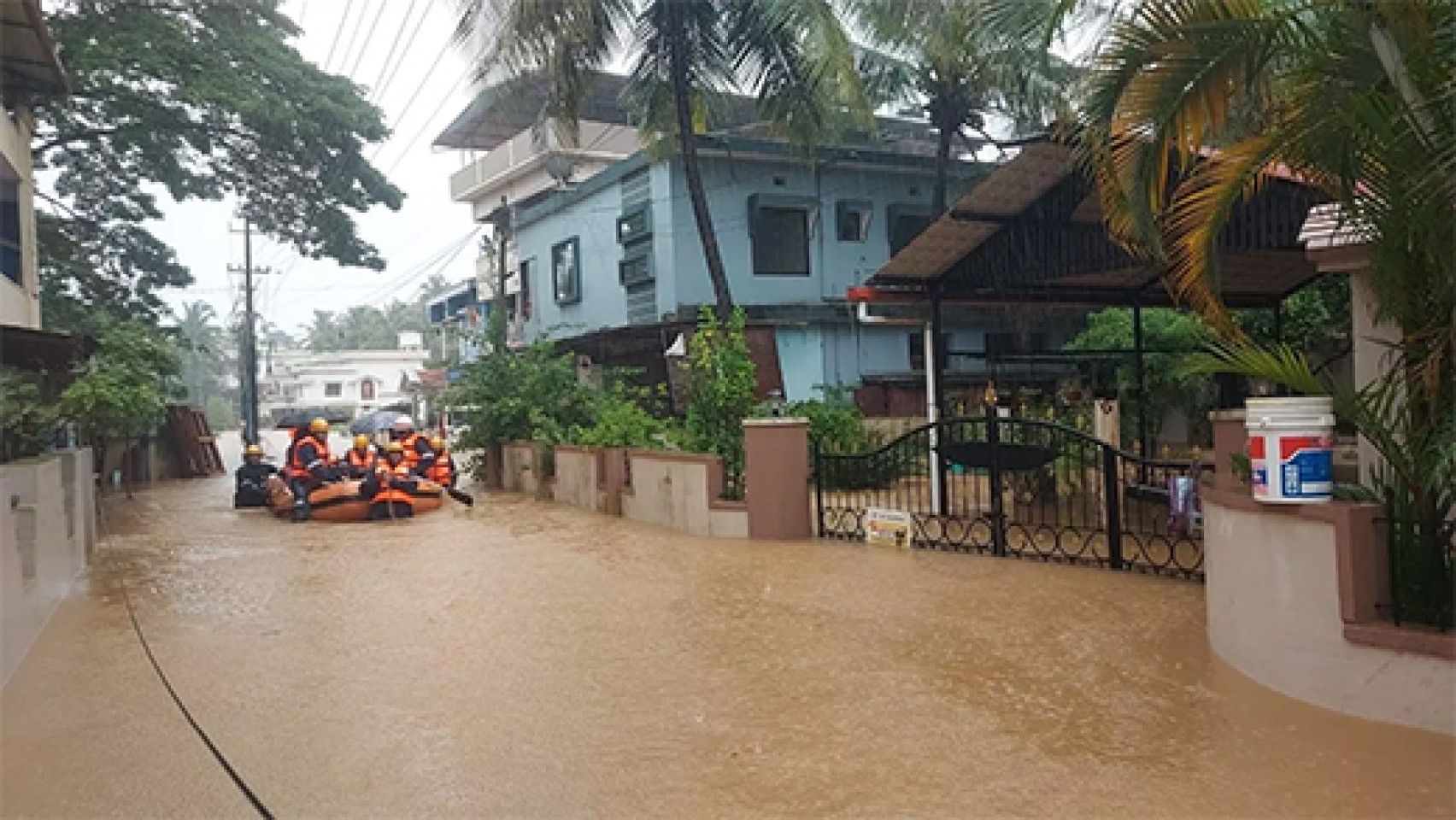
Mangaluru /Udupi/Sirsi (PTI): Normal life was disrupted in the coastal and western ghat districts of Dakshina Kannada, Udupi and Uttara Kannada following heavy to very heavy and incessant rains in the last 36 hours, officials said on Monday.
As a result of ‘excess rains’, many low-lying areas in the undivided Dakshina Kannada (including Udupi) have been flooded. However, on Monday there have not been any incidents of flooding inside Mangaluru city, but Buntwal town experienced inundation in the lower parts of the town situated nearer to the riverfront.
The officials at Karnataka State Natural Disasters Monitoring Centre (KSNMDC) said they are closely monitoring this area and that the rescue team is on standby.
Meanwhile, in Uttara Kannada, 10,600 cusec water was released from the four gates of the Kadra reservoir of Kali river on Monday, as the water level crossed the danger threshold.
Incidentally, when 6,000 cusecs of water was released two days ago, to relieve pressure off the overflowing Kali river, downstream villages of Kadra dam, Kadra, Mallapur, Kerodi, Baira Balani, Karga, Ulag and Halaga were affected.
Areas that witnessed torrential rains in Uttara Kannada on Monday are Sirsi, Siddapur and Yellapur, as well as parts of Malnad (ghats) area of Uttara Kannada. Many houses were flooded in Kadatoka area of Honnavar taluk and a team from National Disaster Response Force (NDRF) had to be deployed to rescue villagers.
Also on Sunday, heavy rain in Karwar of Uttara Kannada district, resulted in the flooding of roads and agricultural fields in Chandia village.
Although rain-related destruction in Uttara Kannada was more intense, owing to heavy downpour, so far, Udupi district has registered the highest number of spots that have experienced inundation of various degrees making normal life impossible.
As rain water entered houses in many places in Udupi, people had to be rescued by firefighters in rubber dinghies.

The worst affected areas were in Kalsanka, Bailakere, Mathadabettu, Gundibail, Padigaru and Sagri. Firefighters went in rubber dinghies to ferry women, children and old folks to safety.
In Uttara Kannada, Colonel Hill in Honnavar, a hillock on which one of the area’s famous monuments, a British era column, stands, collapsed in places on National Highway 66. The landslide cut off traffic on one lane until the debris could be cleared by the employees of IRB Infrastructure Developers Limited, an Indian highway construction company.
In another highway, National Highway 63 at Arebail Ghat, a fallen tree near Yellapur affected traffic for a considerable time. It took a while for the authorities to clear the tree, as it was raining heavily.
According to officials, nine rescue centres in Uttara Kannada have been kept open and, at present, 25 people have taken shelter in these centres. The weather department has also issued an alert for fishermen in the region, advising them not to enter the sea till July 9.
According to KSNMDC’s report, Dakshina Kannada and Udupi received 150 mm and 152 mm of rain respectively in the last 36 hours as against last year’s 144 mm and 145 mm respectively, putting the figures under ‘excess’ category.
Expecting a heavy downpour, as alerted by the Met department, the district administrations of both districts have issued an orange alert in their respective jurisdictions until July 11.
An orange alert means very heavy rain of 11 cm to 20 cm.
All three districts (Dakshina Kannada, Udupi and Uttara Kannada) declared Monday a holiday for schools and PU colleges.
And with the high possibility of very heavy to heavy rain, as predicted by the Met department, district administrations of Dakshina Kannada and Udupi have declared holidays for schools and PU colleges on Tuesday too.
Meanwhile, Uttara Kannada’s Karwar MLA Satish Sail offered ‘bagina’ (an offering to river in full spate, a tradition followed in Karnataka) to Kadra reservoir on Monday.
Uttara Kannada MP, Vishweshwar Hegde Kageri, instructed the Kumta assistant commissioner on Monday to repair the roads as well as to expedite land acquisition process by providing compensation at the earliest to strengthen the road infrastructure in the region.


